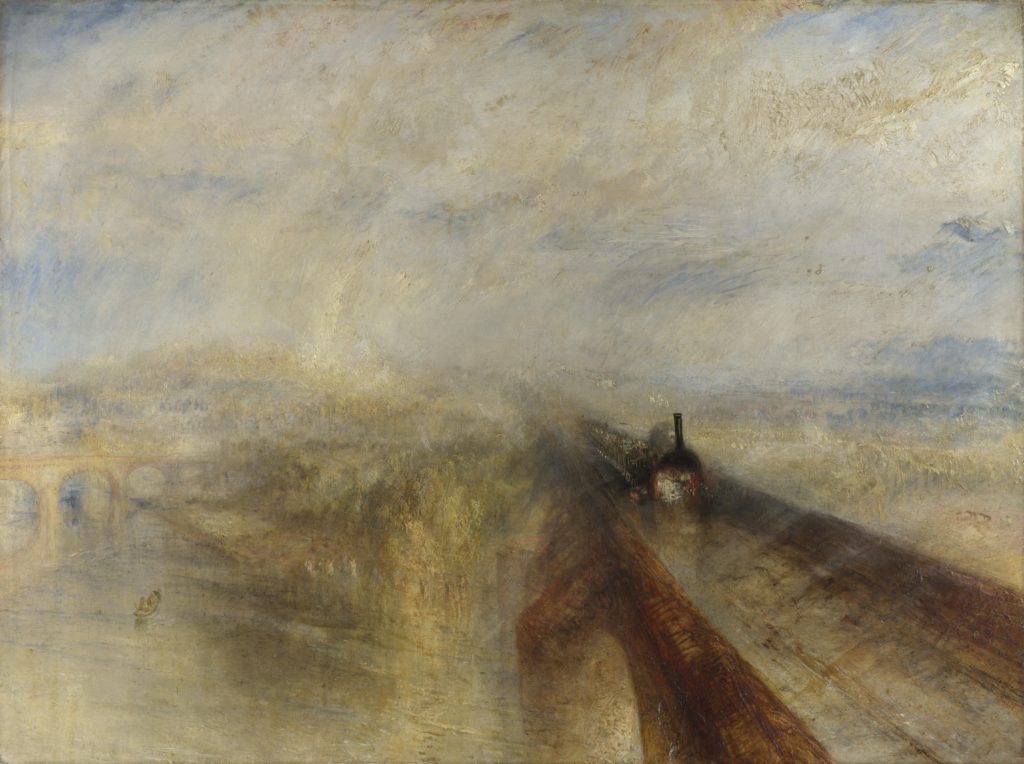A train is also just a train

From My Struggle, Karl Ove Knausgaard’s phenomenological angle on Turner’s painting:
. . . the eye that puts aside all it knows, that puts aside all preexisting insight, is the eye that can see the world anew, as if it were emerging before it for the very first time. Turner was interested in the relationship between the inconstant and the immutable, the solid and the fluid, and in that way the train becomes an expression not of anything else, one of the many categories into which it might be placed to do with modernity, industrialism, civilization, and the man-made, but only of what it is in itself, in pure physical terms, an enormous iron object proceeding along an iron track, almost obliterated by the snow, which would obliterate almost any other object in the same way: a sailing ship, a horse-drawn carriage, a funeral procession, a bear.
—Karl Ove Knausgaard, My Struggle, Volume 6
The painting shows how dwarfed this massive iron horse appears in the context of a nature overpowering and sublime. Our view of nature now is both the same and the opposite: in the “anthropocene,” we constantly tell ourselves that we are changing everything around us, spoiling it and twisting it into a state of imbalance and disorder, and we makers of engines are going to incite nature to violent storms and deadly droughts and massive, hostile phenomena akin to what Turner was depicting. The difference is that now we think our little engines, our technological and chemical footprints, cause the storm that envelopes them and threatens their and our disappearance. Now the engine in the painting, as it were, creates what dwarfs and erases it from view–we are the storm. As usual with human beings, it’s all about us.
Knausgaard glosses over Turner’s awe and passion for nature’s beauty and power, no matter how hostile it becomes to human life, his Romantic devotion to nature as a new sort of God, a source of mystery, if not meaning. He’s right that Turner wasn’t trying to illustrate an idea, but convey through perception and intuition the relationship between human life and a larger, implacable world–the way Chinese scroll paintings juxtaposed tiny human figures against beautiful, craggy mountains, putting us into proper perspective within the whole. (It’s nice that the Sung Dynasty had no locomotives to include.) Man isn’t the measure of all things, in those paintings, except as a unit for judging the scale of a world infinitely more extensive than the human body and human concerns.
Comments are currently closed.